1st impressions on macro photography & help wanted.
Unless you're chasing beetles or such like a tripod is pretty much mandatory. If you are I've no idea, unless the critter is dead
A small aperture gives a better depth of field but that raises other problems -- a-Lower light levels b-defraction limitations.
To increase light levels use very bright day light plus a reflector (white card, mirror etc)
A flashgun would be an advantage and can be diffused with several layers of white hankercheif, white plastic (lid of an icecram tub etc). Againg reflectors would also be a "free" way to get a second light source
Auto/manual in general manual can be easier as this enables you to pick the focus pint easier.
Finally don't forget you can stack several images (combinezm and/or others) to get a greater depth of field
regards
Bernard
http://www.ebay.co.uk/itm/180609551233?ssPageName=STRK:MEWNX:IT&_trksid=p3984.m1...
Yes it is very plasticky but it does give you light where you want it and can be powered from the mains for indoor work.
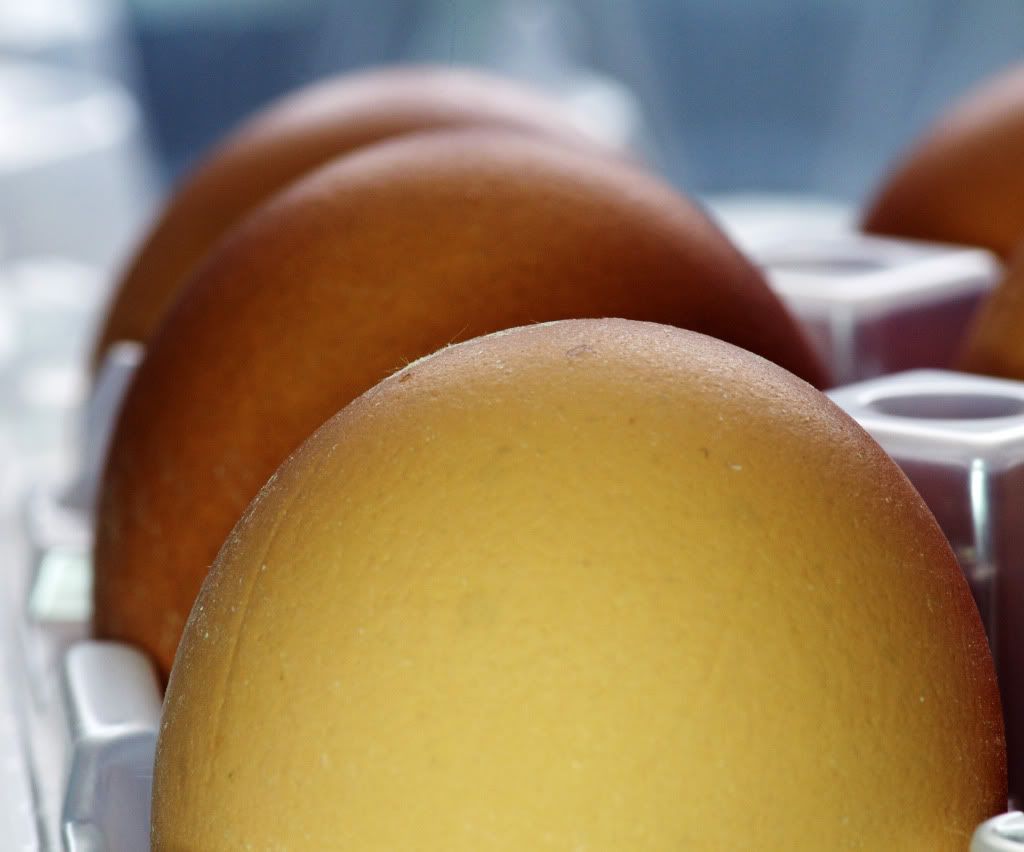
I tested it by taking a few shots of some eggs. In this pic I powered only I side of the ringlight to give a more directional light.
The other thing that is very handy for precise work is a focus rail - need a tripod for this of course.
Shake : flash
Lighting : tried quite a few systems (on-camera flash + filter, snoot, softboxes etc.) now I use off camera wireless flash & softbox and sometimes a snoot.
WB - I use AWB
Aperture - f5.6 thru f16 depends on the subject and light conditions. Usually f8 / f11
Long shutter speeds ? Huh ? As fast as possible to combat blur from shake ! However a lot depends on the light.
AF will focus at short distances - that's why it's an AF Macro lens. Sometimes I just use a rocking motion, sometimes AF, sometimes MF and sometimes a focus rail so I can stack photos. Sometimes I use a tripod .. more often I don't.
Macro lens usually make great portrait lenses (though may need softening !) as they produce gorgeous bokehs !
These are 1 cm long caterpillars (macro + raynox 250) :



Nikon. D800. D600. Sigma 500/4.5, Nikon 300/2.8 VRII, Sigma 120-300/2.8, Zeiss Distagon ZF2 21/2.8, Zeiss Distagon ZF2 35/2.0, Sigma 50/1.4, Nikkor 85/1.8, Nikon TC20EIII, Nikon TC14EII, Kenko x1.4, Sigma 2.0
Generally flash held at arms length from the subject is OK, higher magnifications can need it closer. The P-TTL will cope nicely with quite a wide range of positions & it's easy to angle the light as you want.
Before the cable arrived, I bounced the flash of an A4 white card. This also works OK but needs a bit more setting up - fine for still life but difficult with insects.
I have a couple of old ring flashes somewhere from film days, but I've not found it worth the bother of finding them.
If the only flash you have is the built in one - cigarette papers make good diffusers but you may have problems with the lens getting in the way.
I have found a few subjects where a light tent helps significantly to reduce reflections, but that's the exception rather than the rule.
My macro is MF, I sometimes use the catch in focus wit gentle swaying to & fro - other times I fire manually. I think I may have used AF with stacked lenses (with a 50mm reversed on the kit) but this isn't recommended.
.
Pentax:K5ii, K7, K100D, DA18-55, DA10-17, DA55-300, DA50-200, F100-300, F50, DA35 AL, 4* M50, 2* M135, Helicoid extension, Tak 300 f4 (& 6 film bodies)
3rd Party: Bigmos (Sigma 150-500mm OS HSM),2* 28mm, 100mm macro, 28-200 zoom, 35-80 zoom, 80-200 zoom, 80-210 zoom, 300mm M42, 600 mirror, 1000-4000 scope, 50mm M42, enlarger lenses, Sony & micro 4/3 cameras with various PK mounts, Zenit E...
Far to many tele-converters, adapters, project parts & extension tubes etc.
.[size=11:].Flickr• WPF• Panoramio
Magnification : yes you need 1:1 .. and soon you'll want more !
Shake : flash
Lighting : tried quite a few systems (on-camera flash + filter, snoot, softboxes etc.) now I use off camera wireless flash & softbox and sometimes a snoot.
WB - I use AWB
Aperture - f5.6 thru f16 depends on the subject and light conditions. Usually f8 / f11
Long shutter speeds ? Huh ? As fast as possible to combat blur from shake ! However a lot depends on the light.
AF will focus at short distances - that's why it's an AF Macro lens. Sometimes I just use a rocking motion, sometimes AF, sometimes MF and sometimes a focus rail so I can stack photos. Sometimes I use a tripod .. more often I don't.
Macro lens usually make great portrait lenses (though may need softening !) as they produce gorgeous bokehs !
These are 1 cm long caterpillars (macro + raynox 250) :
Hi Kevin
I bought the Raynox 250 after you previously mentioned it and showed one of your caterpillars. Have only managed to play with it a little so far but first impressions are - good IQ but focusing the thing is an art! Bizarrely it seems to want to focus to the left of the subject - weird!
I also tried it on my 50mm 1.4 instead of my Sigma 105 macro - and the DOF and bokeh is very nice indeed!
Sorry - back to subject:
1:1 become not enough as previously mentioned - once you get used to it
camera shake - lighting as previously stated - because you need a fast shutter -doesn't matter how you achieve the light - we all have our preferences you just need it! I prefer constant light rather than flash - one of the reasons is that you can see any reflections/ problems before taking the shot and reposition to avoid them. Clearly if you want to use natural light - it needs to be bright enough to do so - again same rules as always apply
Settings - no magic formula that I have come across - just apply usual photo logic
AF/MF - I tend to AF and then manually fine tune if needed
Carl
SHAKE: Try using a monopod rather than a tripod, much more flexible and easier to re-position - you can get a basic cheap one from Amazon for a tenner. Flash is the obvious solution; it can be harsh and/or expensive to buy especially if you buy ringflash. Try making a flash diffuser out of a Pringles Tube, make a 90 degree turn in it by cutting it diagonally and fixing it back together with Duck Tape. The end with the plastic cap is the diffuser, the other end you cut off and push onto your flashgun head. As long as your flasgun is reasonably powerful this is a cheap way to get nice diffused flashlight. Finally, if you shoot in natural light make sure there's plenty of it and learn to hold your camera steady!!
LIGHTING: See above re flash. Not sure what you mean by 'Shine' caused by natural light; I guess you are talking about burned out areas caused by overexposure. You will learn how to expose the shots correctly with practice; one suggestion would be to set your camera to 'spot' metering and make sure you take the meter reading from the critical areas of the picture that need to be correctly exposed
IDEAL CONDITIONS: Bright wind-free day outdoors (Spring or Summer), or any time indoors if using artificial light
CAMERA SETTINGS: AV (Aperture Priority) with auto lens, or Manual with an old lens that does not support auto aperture. Use apertures of F8 or higher if light allows, unless you are purposefully aiming for wafer-thin Depth of Field which can be very effective on certain shots. Use manual focussing, if you can see the LCD screen the 'Live View' is often very useful for focussing on still subjects as you can zoom in and magnify the suject by pressing the 'Info' button (depends on your camera model)
AUTO vs. MANUAL LENS: I have no preference. For me manual is fine as I rarely use auto settings for macro shots. BTW, for focussing try moving the camera back and forth once near to perfect focus, rather than using the ocus ring. Also use the 'catch in focus' feature if you have it on your camera.
Finally, try using some cheap extension tubes with non macro lenses. You will be amazed what results can be achieved.
Regards
David
I have, on occasion used the onboard flash for a little fill light, which can work well, but it needs diffused to rid the image of nasty blown out detail and harshness, as well as the dreaded black background it can create - although this can look good in some circumstances.
I used to do a lot of target rifle shooting many years ago, so use the same technique for getting a stable stance and regulate breathing to aid in eliminating movement. However, I still get times when I seem to be contorted into some weird position and holding my breath, wondering if I'll get to take the shot before I go blue and pass out!
I also tend to use F8-F16 mostly (even used F22 a few times), and nearly always use manual focus. Like most things, it takes practice and has a learning curve, but that's half the fun and when you crack it the number of keepers will go up too.
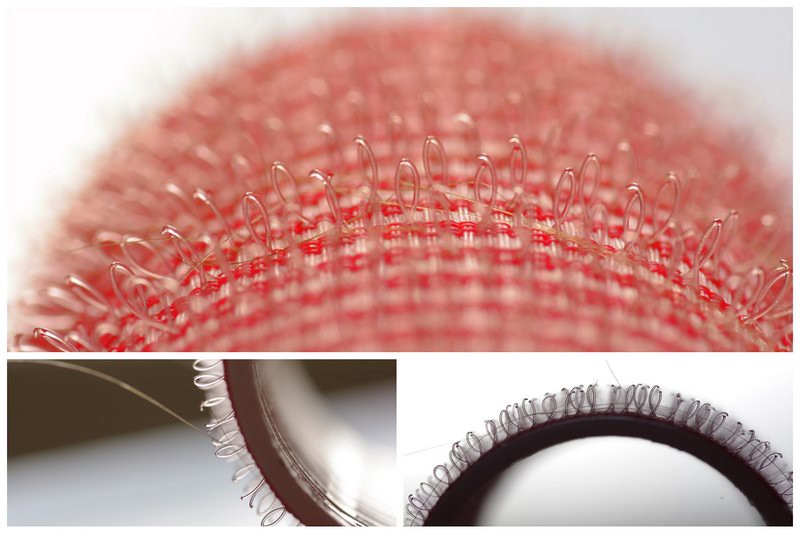
Hair curler by Photoblog.ie (Patrick Dinneen), on Flickr
Razor Blade:
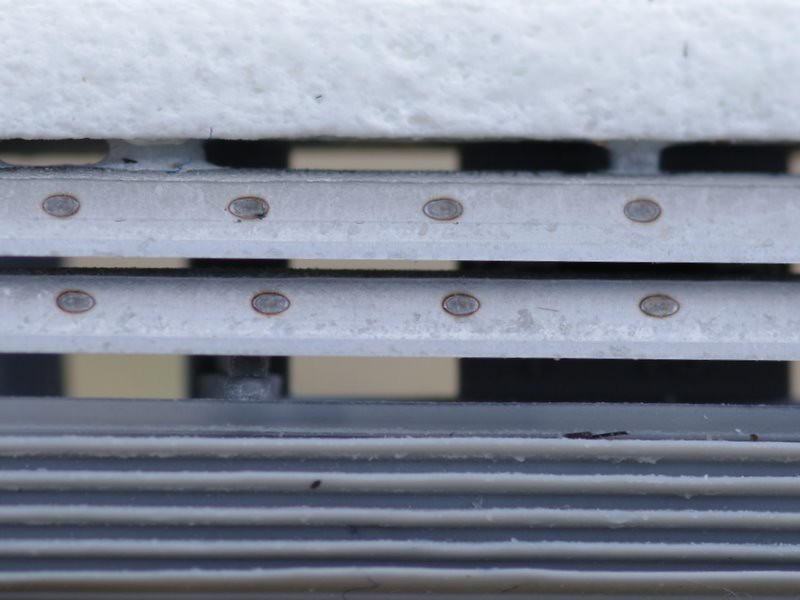
Macro messing around by Photoblog.ie (Patrick Dinneen), on Flickr
1. They dont loose light for focussing. You still have the full aperture available. When taking the shot,you can close down as far as required.
2. They are very easy to use and
3. they don't really affect the picture quality when stopped down to say f8 or f11.
4. It does not affect your automatic functions of your lens. Autofocus may be a problem, but you can always set it to manual focussing.
However I don't know if they are available in any other size as in 49mm.
I use mine with any 50mm lens that has a 49mm thread.
Horst
A dedicated macro flash is expensive, either in the form of the Pentax ring flashes, or those with twin flash heads.
An acceptable alternative is any flash that will work with your camera, even if only at full power. You can make the necessary adjustments to the camera to get a good exposure. You may need to fabricate some kind of light tunnel/diffuser, to get the light to your subject.
LED ring lights are also available at very reasonable prices.
For more information about macro-photography for beginners, check out my article here.
http://www.7dayshop.com/catalog/product_info.php?cPath=777_1&products_id=111929
I got a 44 AF-1 which I'm pleased with for such an inexpensive unit.
http://www.srsmicrosystems.co.uk/5766/Metz-Mecablitz-44-AF-1-Digital-Flash---Pen...
Sigma 8-16 Pentax DA 16-45 Pentax DA 55-300 Pentax 18-55WR Tamron 90 Di Macro Metz 44 AF-1

You have to click on the little cross where the picture should be. I don't know how else to do it.
Hi, here is an example of approximatly 240mm (10") of Extention tubes.
It is a Transistor chip of about 1.5mm X 1.5mm.
The picture is now approx 40 years old.
It was taken with my Spotmatic, a super Takumar 50mm f1.8 with the extention tubes and a reversing ring. The light was a normal desk lamp of about 40W shining close from one side. The exposure time was about a minute and a half. I can't remember what f-stop I used. However the dof
is very shallow. I used a very sturdy tripod.
The picture here was scanned from a print with my Canon 5600 scanner.
I wanted to show, that with extention tubes you can just about photograph anythin small. These days with DSLR's it is a lot easier, because you can instantly check if you need more or less exposure time.
Horst
Add Comment
To leave a comment - Log in to Pentax User or create a new account.




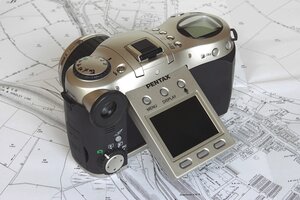
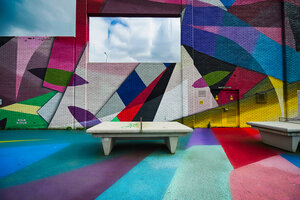

647 posts
14 years
So I bought a pentax 100mm f2.8 1:1 macro lens on Friday and played with it over the weekend. Just wanted to share my first impressions.
It's not as easy as I thought- lighting, camera shake, very narrow focus area.
Magnification: Beofre I bought I read a lot of people saying you don't need 1:1 but I thought it's obviously better. Now I know that 1:1 doesnt' simply mean what you see is what you get.
"1:1 means that the size of the subject in the plane of focus is identical to the image sensor size in the camera" or 'what you shoot fills your frame, it's magnified 'a lot'.
You don't need to go for 1:1 maximum magnification all the time. When I tried this the depth of field in focus is so narrow that it takes a lot of effot and time to get your object perfectly sharp. And you end up with a lot of camera shake. I originally thought camera shake wouldn't be a consideration as Pentax have in body stabilization but it is an issue. A tripod would help but this is an extra work effort.
Question-What solution do people use to combat camera shake?
Lighting- as you're so close to the object/zoomed in the lighting has a very big effect- outdoors a shine appears easily from the daylight, indoors light from the bulb.
Question: What are the ideal conditions for shooting macro, i don't have a softbox, dedicated macro flash? As I've only started playing I haven't looked into this much
Camera Settings: Are there ideal settings?Obvioulsy a long shutter speed to help combat camera shake. Aperture depends I suppose. White balance- should I select a specific setting seeing as I'm so close to my object?
Auto vs manual lens Again a lot of people said you don't need an auto lens for macro as you'll be shooting in manual mode. After buying I now realise why- at very close range in auto mode the lens won't focus but in manual you can focus. I'm still happy I have an auto lens as I can use it for shooing my kids etc.
I'll post up some photos soon but for now I'm still finding my feet and learning. I see a whole world of macro out there and am going to try everything- side of book, coloured pencil heads, toothbrush, nails, eyelash etc etc etc.
I've shot macro before but never with a 'proper' macro lens, here's my macro top 10 on Flickr
I've seen theseon 'another site' and will read them in detail.
Cheers,
pa
Pa
http://www.photoblog.ie where every post have a musical reference as it's title.